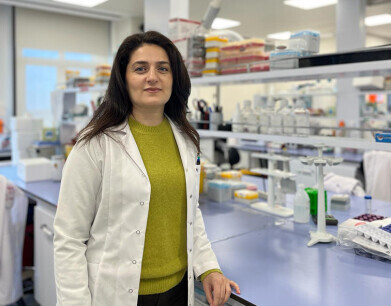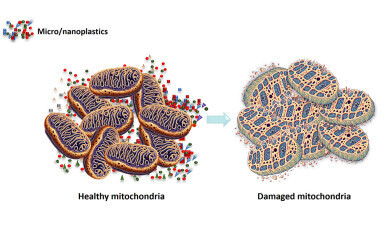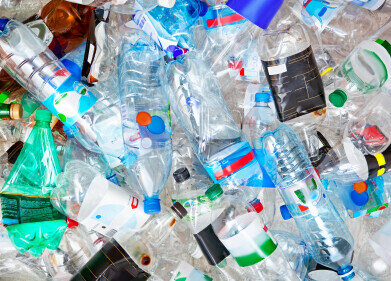-
-and-Müfide-Aydoğan-Ahbab-(right)[1].jpg) Fulya Dal Yöntem (left) and Müfide Aydoğan Ahbab (right)
Fulya Dal Yöntem (left) and Müfide Aydoğan Ahbab (right) -
 Müfide Aydoğan Ahbab
Müfide Aydoğan Ahbab -
 Healthy-damaged mito illustration
Healthy-damaged mito illustration -
 Fulya Dal Yöntem
Fulya Dal Yöntem
Microplastics Analysis
Urgent Calls for Further Research into the Health Impacts of Microplastics and Nanoplastics
Mar 21 2024
Recent findings have shed light on the concerning presence of microplastics (MPs) and nanoplastics (NPs) in human tissues, raising alarm bells about their potential threat to human health. Plastic residues have been detected in various human organs and bodily fluids, with evidence suggesting their detrimental effects on cellular function and overall well-being.
A comprehensive metastudy titled "Mitochondria as a Target of Micro- and Nanoplastic Toxicity," authored by Dal Yöntem of Koç University and Müfide Aydogan Ahbab of the University of Health Sciences Türkiye, scrutinised 130 research studies. Their analysis underscores the urgent need for regulators to reassess the environmental and health risks associated with MP/NP pollution.
The research reveals that MPs/NPs, due to their minute size, can bypass biological barriers, infiltrate human cells, and specifically target mitochondria—the powerhouses of cells responsible for energy production and essential cellular processes. Damage to mitochondria can disrupt cellular function, potentially increasing the susceptibility to various health conditions, including neurodegenerative and cardiovascular diseases.
Notably, the majority of MPs/NPs originate from plastic waste, existing in primary and secondary forms. While primary particles are commonly found in consumer products like toothpaste and sunscreen, secondary particles result from the degradation of plastic waste in the environment. Despite their prevalence, the impact of secondary MPs/NPs on human health remains largely unexplored.
Furthermore, existing research predominantly focuses on specific types of plastic, primarily polystyrene (PS), overlooking the potential effects of other plastic polymers and additives commonly found in the environment. This knowledge gap highlights the need for a more comprehensive understanding of the diverse array of plastic pollutants and their health implications.
Yöntem and Aydogan Ahbab emphasise the critical importance of raising awareness about the risks associated with MPs/NPs pollution and advocating for measures to mitigate plastic waste. They urge individuals, governments, and organisations to prioritise the reduction of plastic usage and promote sustainable alternatives. Addressing this issue requires interdisciplinary collaboration across environmental science, toxicology, public health, and policymaking realms.
In conclusion, heightened research efforts are imperative to assess the full extent of MPs/NPs pollution and its impact on human health. By taking proactive steps to address this issue, we can safeguard the well-being of current and future generations.
Digital Edition
AET 28.4 Oct/Nov 2024
November 2024
Gas Detection - Go from lagging to leading: why investment in gas detection makes sense Air Monitoring - Swirl and vortex meters will aid green hydrogen production - Beyond the Stack: Emi...
View all digital editions
Events
Jan 12 2025 Abu Dhabi, UAE
Jan 14 2025 Abu Dhabi, UAE
Jan 20 2025 San Diego, CA, USA
Carrefour des Gestions Locales de L'eau
Jan 22 2025 Rennes, France
Safety, Health & Wellbeing LIVE
Jan 22 2025 Manchester, UK


















